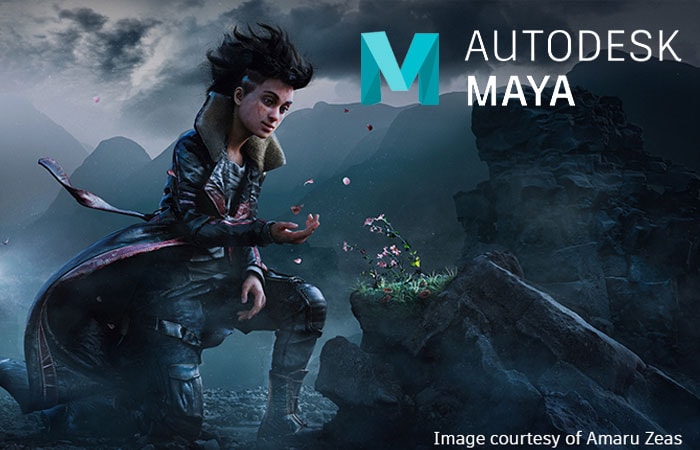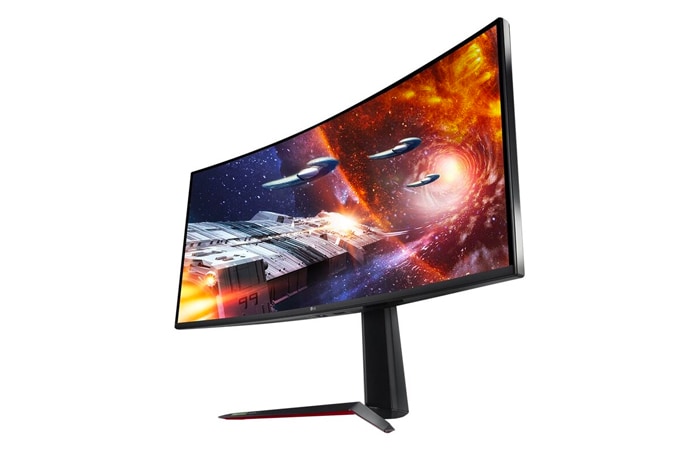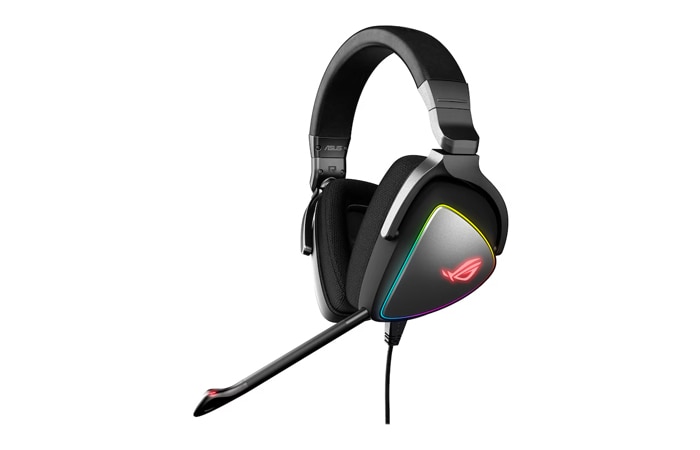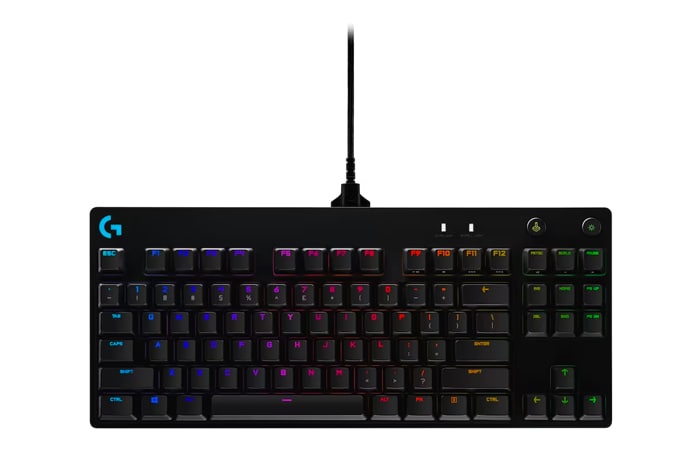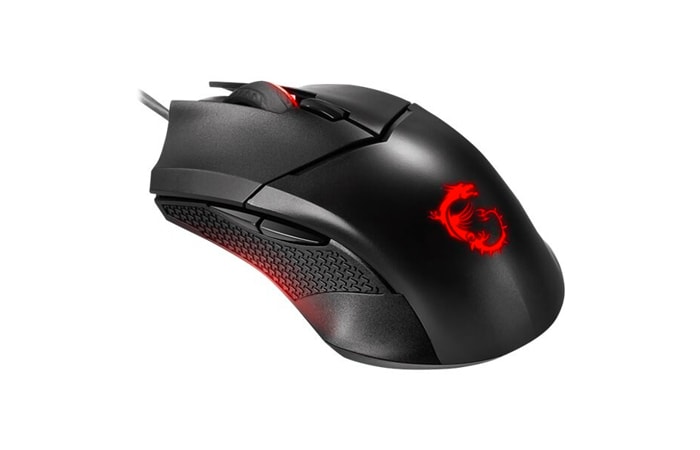This website stores cookies on your computer.
These cookies are used to collect information about how you interact with our website and allow us to remember you. We use this information in order to improve and customize your browsing experience and for analytics and metrics about our visitors both on this website and other media. To find out more about the cookies we use, see our Privacy Policy.
Gaming Technology
From Development to Play, Technology Powers Gaming

Gaming technology has changed not only the way we play, but also how we learn and work. These technologies, which range from game development hardware and software to the latest technologies needed to power elite eSports teams, are transforming digital experiences and offering businesses and universities new avenues for engaging with their end users. Nowhere is this having more impact than in business.
Gaming technologies that are influencing the business world today include:
Utilizing virtual reality and augmented reality in field service, manufacturing, and industrial settings are helping companies solve long-standing challenges. By innovating with the right video game development tools, companies are also positioning themselves on the cutting edge of trends, such as the Metaverse, and developing proprietary digital experiences for their customers.
Successfully adopting a gameplan to make your gaming vision a reality requires the right software, hardware, and talent. It’s important to access the processors, servers, and game engines to power seamless, immersive video game experiences and virtual reality business platforms. Game designers, developers, and other talent require specialized and powerful machines that can support the processing power, graphics capabilities, and data access they need to work from anywhere.
With an experienced gaming technology partner on your side, you’ll maximize the benefits and mitigate the risks of adding these technologies into your processes. Connection is your one stop for all things gaming technology.
- Augmented reality (AR), virtual reality (VR), and mixed reality (MR)
- Hardware and software for video game development
- eSports technology
- Gaming hardware
Utilizing virtual reality and augmented reality in field service, manufacturing, and industrial settings are helping companies solve long-standing challenges. By innovating with the right video game development tools, companies are also positioning themselves on the cutting edge of trends, such as the Metaverse, and developing proprietary digital experiences for their customers.
Successfully adopting a gameplan to make your gaming vision a reality requires the right software, hardware, and talent. It’s important to access the processors, servers, and game engines to power seamless, immersive video game experiences and virtual reality business platforms. Game designers, developers, and other talent require specialized and powerful machines that can support the processing power, graphics capabilities, and data access they need to work from anywhere.
With an experienced gaming technology partner on your side, you’ll maximize the benefits and mitigate the risks of adding these technologies into your processes. Connection is your one stop for all things gaming technology.
Most Popular Gaming Technology
Gaming in 2025: How Emerging Technologies Are Changing Play

Gaming is no longer confined to consoles and controllers. In 2025, it’s a dynamic ecosystem shaped by artificial intelligence, cloud computing, next-gen hardware, and new community-building strategies that redefine how games are made, played, and shared. The future of gaming is more responsive, more intelligent, and more connected than ever before.
From AI-generated characters that can hold conversations in real time to cloud-based platforms delivering high-fidelity experiences on mobile devices, emerging tech is blurring the lines between developer and player, platform and experience. Major announcements from Microsoft, EA, Arm, and others at this year’s Game Developers Conference (GDC) show that innovation isn’t slowing down—it’s accelerating.
In this article, we’ll explore the key technologies transforming play in 2025 and what they mean for the next generation of gamers.
NVIDIA wowed audiences with breakthroughs in neural rendering, including RTX Neural Shaders, which use small neural networks to generate textures, lighting, and materials for more photorealistic worlds. Their latest demo, Zorah, showed cinematic lighting, complex hair systems, and millions of triangles rendered in real time—all powered by advanced tools like RTX Mega Geometry and DLSS 4, which boosts frame rates up to 8x using AI.
Meanwhile, EA highlighted how it’s using AI to solve challenges like pathfinding, streamline stadium creation, and generate lifelike athletes for titles like Madden NFL 25. Their Texture Sets innovation bundles complex surface maps into single assets, improving visual quality and making workflows more efficient—results players will see firsthand in upcoming games.
Inworld, known for its AI character tools, demonstrated how NPCs can now have evolving personalities, respond more realistically, and even carry conversations that adapt over time. Games like Winked and Status showed how studios are blending narrative and gameplay with responsive AI characters to keep players engaged and immersed.
Together, these advancements mark a shift in game development. AI isn’t just speeding up production—it’s elevating what’s possible, helping studios deliver more dynamic, authentic, and immersive gaming experiences.
To help developers optimize their games for cloud platforms, Microsoft introduced tools supporting various input methods, including touch controls for mobile devices and keyboard-mouse setups for PCs. These enhancements aim to broaden game accessibility and engagement across diverse player demographics.
Collaborations between companies like Xsolla and Amazon Web Services (AWS) are also driving the future of cloud gaming. At GDC 2025, they unveiled Xsolla Cloud Gaming, powered by Amazon GameLift Streams, enabling developers to deliver high-quality gaming experiences directly to players via cloud-based streaming, eliminating the need for expensive hardware. This partnership underscores the industry's commitment to leveraging cloud technology to enhance game distribution and accessibility.
These developments highlight a clear industry trend: cloud gaming and streaming platforms are not only expanding the reach of games but also democratizing access, allowing players worldwide to enjoy high-quality gaming experiences without the barrier of specialized hardware.
From AI-generated characters that can hold conversations in real time to cloud-based platforms delivering high-fidelity experiences on mobile devices, emerging tech is blurring the lines between developer and player, platform and experience. Major announcements from Microsoft, EA, Arm, and others at this year’s Game Developers Conference (GDC) show that innovation isn’t slowing down—it’s accelerating.
In this article, we’ll explore the key technologies transforming play in 2025 and what they mean for the next generation of gamers.
AI is rewriting the rules of game development
AI and machine learning are no longer futuristic concepts in gaming—they’re reshaping how developers build games and how players experience them. At GDC 2025, major players like NVIDIA, EA, and Inworld showcased powerful new tools that bring more immersion, realism, and creativity to game development.NVIDIA wowed audiences with breakthroughs in neural rendering, including RTX Neural Shaders, which use small neural networks to generate textures, lighting, and materials for more photorealistic worlds. Their latest demo, Zorah, showed cinematic lighting, complex hair systems, and millions of triangles rendered in real time—all powered by advanced tools like RTX Mega Geometry and DLSS 4, which boosts frame rates up to 8x using AI.
Meanwhile, EA highlighted how it’s using AI to solve challenges like pathfinding, streamline stadium creation, and generate lifelike athletes for titles like Madden NFL 25. Their Texture Sets innovation bundles complex surface maps into single assets, improving visual quality and making workflows more efficient—results players will see firsthand in upcoming games.
Inworld, known for its AI character tools, demonstrated how NPCs can now have evolving personalities, respond more realistically, and even carry conversations that adapt over time. Games like Winked and Status showed how studios are blending narrative and gameplay with responsive AI characters to keep players engaged and immersed.
Together, these advancements mark a shift in game development. AI isn’t just speeding up production—it’s elevating what’s possible, helping studios deliver more dynamic, authentic, and immersive gaming experiences.
Cloud gaming and streaming platforms: expanding access and opportunities
Cloud gaming has transitioned from a novel concept to a mainstream pillar of the gaming industry. At GDC 2025, Microsoft showcased significant advancements in Xbox Cloud Gaming (Beta), emphasizing its mission to enable players to enjoy games on any device, anywhere. By expanding server locations and enhancing infrastructure, Xbox Cloud Gaming has reduced network latency, providing smoother experiences across devices like iOS and Android phones, tablets, and even smart TVs. Between October and December 2024 alone, players streamed 140 million hours of gameplay through the service.To help developers optimize their games for cloud platforms, Microsoft introduced tools supporting various input methods, including touch controls for mobile devices and keyboard-mouse setups for PCs. These enhancements aim to broaden game accessibility and engagement across diverse player demographics.
Collaborations between companies like Xsolla and Amazon Web Services (AWS) are also driving the future of cloud gaming. At GDC 2025, they unveiled Xsolla Cloud Gaming, powered by Amazon GameLift Streams, enabling developers to deliver high-quality gaming experiences directly to players via cloud-based streaming, eliminating the need for expensive hardware. This partnership underscores the industry's commitment to leveraging cloud technology to enhance game distribution and accessibility.
These developments highlight a clear industry trend: cloud gaming and streaming platforms are not only expanding the reach of games but also democratizing access, allowing players worldwide to enjoy high-quality gaming experiences without the barrier of specialized hardware.
Next-generation consoles and hardware innovations
The gaming industry is witnessing remarkable advancements in hardware, enhancing both visual fidelity and user interaction.Enhanced graphics and performance
NVIDIA's introduction of the GeForce RTX 50 Series GPUs, powered by the new Blackwell architecture, marks a significant leap in AI-driven rendering capabilities. These GPUs feature fifth-generation Tensor Cores and fourth-generation RT Cores, delivering breakthroughs in neural shaders and real-time ray tracing. This technology enables more realistic visuals and a 2x performance increase over previous generations, providing gamers and developers with unprecedented graphical power.Innovative input methods
Advancements in input devices are enhancing gameplay immersion and accessibility. At GDC 2025, Microsoft expanded its GameInput API to support trackpad devices and introduced absolute readings, streamlining input handling for developers and improving user experience on PCs.Additionally, companies like Ayaneo unveiled new gaming hardware, such as the Ayaneo Pocket S2 handheld and the Ayaneo Gaming Pad tablet, both powered by the Qualcomm Snapdragon G3 Gen 3 platform. These devices offer versatile and immersive gaming experiences, catering to diverse player preferences.
These innovations in graphics and input technologies are collectively pushing the boundaries of gaming, offering players more immersive and responsive experiences.
The rise of community-centric games
The gaming landscape is increasingly emphasizing community engagement and social integration, recognizing that fostering strong player connections enhances both the gaming experience and a game's longevity.Building and sustaining player communities
Platforms like Discord have become central hubs for game communities, enabling developers and players to interact directly. Theorycraft Games exemplifies this approach with their title Supervive. By utilizing Discord for playtests and ongoing engagement, they gather real-time feedback, fostering a collaborative development process and strengthening their community.Recognizing Discord’s role in community building, Roblox introduced "Party," a chat feature allowing up to six users to communicate while playing games. This integration aims to enhance social interactions within the platform, reducing reliance on external communication apps.
Social features in gaming
Integrating social elements within games encourages collaboration and shared experiences. For instance, World of Warcraft has facilitated real-life connections, with players forming friendships and even marriages through in-game interactions.Developers are increasingly embedding social features such as in-game chat, friend lists, and collaborative missions to promote teamwork and community building. These elements not only enhance player engagement but also contribute to a more immersive and connected gaming environment.
Future outlook
Looking ahead, the gaming industry is poised for continued integration of emerging technologies. Adaptive development strategies will be essential to keep pace with technological advancements and evolving player expectations. The GDC 2025 State of the Game Industry report highlights a significant increase in developers planning games for PC platforms, reflecting a shift towards more open and versatile gaming environments.Game Development Software
Autodesk Media and Entertainment Collection

The Media and Entertainment Collection includes all the tools you need to build a powerful and scalable 3D animation pipeline for complex simulations, effects, and rendering.
- From detailed battle sequences to hyper-realistic creatures, render your toughest projects with Arnold
- Create complex effects including explosions, fire, sand, and snow with Bifrost for Maya
- Empower artists with a choice of tools to produce beautiful, film-quality work every time

Maya
Create expansive worlds, realistic characters, and dazzling effects.
MotionBuilder
Capture, edit, and playback complex character animation.
ReCap Pro
Create 3D models from imported photographs and laser scans.
Autodesk Rendering
Use cloud rendering to create photorealistic images in less time.
3ds Max
Create massive worlds for games and finely detailed interiors for design visualization.
Mudbox
Sculpt and paint highly detailed 3D geometry and textures.
Arnold
Render your most complex projects.Keeping Game Development Creative
Splash Damage, a game development studio based in the United Kingdom, faced a number of challenges, including needing the flexibility to scale up and down very quickly to hit deadlines on time.Learn why the team chose the Media and Entertainment Collection and how it helped face the challenges and succeeded, delivering exceptional results.
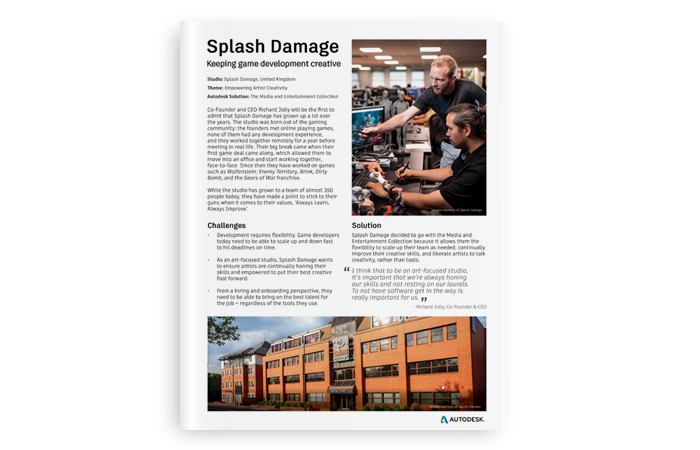
Maya
Maya is professional 3D software for creating realistic characters and blockbuster-worthy effects.
- Bring believable characters to life with engaging animation tools.
- Shape 3D objects and scenes with intuitive modeling tools.
- Create realistic effects—from explosions to cloth simulation.
Accelerate workflows
Maya’s powerful tools help you iterate faster so you can focus on creativity and meet deadlines.
Add fine details to characters and scenes, and deliver quality work that keeps clients coming back.
Scale for complexity
Top artists in the industry rely on Maya to create the most complex shots, characters, and worlds.
MotionBuilder
Produce high-quality 3D character animations with prebuilt moves.
Capture, edit, and play back complex animations with MotionBuilder® 3D character animation software. Work in an interactive environment optimized to help you work faster and more efficiently without compromising creativity.
A real-time 3D engine
Create realistic character movements using one of the industry's fastest animation tools.
Motion capture editing
Fine-tune character animations with production-proven tools used to manipulate motion capture data.
Smooth interoperability
Included software development kit and FBX data exchange enable easy interoperability with other 3D applications.
Game Engines
Game engines are used to develop video games. They are software frameworks that enable developers to more efficiently create interactive worlds, providing tools such as animation, artificial intelligence, input options, game physics, and more. Some game engines are more robust, offering more advanced options but requiring more time to master, while other engines are more limited and easier to use. Selecting the right engine can have a significant impact on the end product, as well as the process to get there.
GameMaker
Used to create 2D games, GameMaker was originally released in 1999. Because of its click and drag interface, which doesn’t require programming experience/knowledge, it is generally easier to use, but it has limitations compared to other gaming engines.
Games: Hotline Miami, Hyper Light Drifter, Risk of Rain, Spelunky, Undertale
Unity
Unity is an extremely popular engine amongst game developers, because it can be used to create 2D and 3D content. It has an easy-to-learn (and use) interface which enables developers to spend more time developing their gaming worlds and less time training.
Games: Cuphead, Desperados III, Fall Guys, Hollow Knight, Mario Kart Tour
Unreal Engine
One of the most popular game engines, Unreal Engine was first released in 1998. Used to create 2D and 3D worlds, Unreal has an array of features available to the developers to help bring their games to life – vast and engaging worlds to explore.
Games: Borderlands, Days Gone, Dishonored, Dragon Quest XI, Star Wars Jedi: Fallen Order
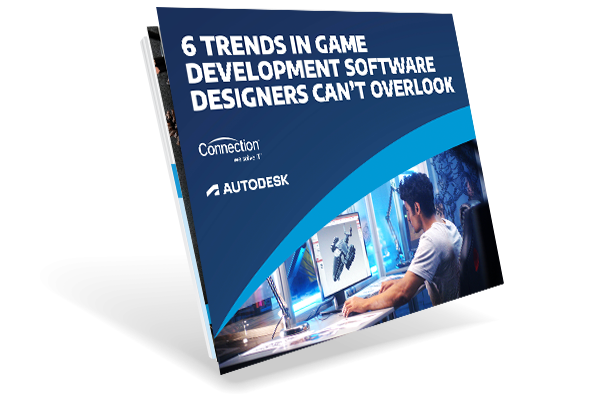
6 Trends in Game Development Software Designers Can’t Overlook
Innovative gaming software designers are developing a host of new tools that are changing the way companies do business and offering compelling virtual experiences. The latest trends in game development software offer an exciting opportunity to implement new technologies and new ways to approach important questions about the future of the industry.Here’s a closer look at the key trends shaping game development.
Sponsored by: 
Game Developers Conference (GDC)
The Game Developers Conference (GDC) brings the game development community together to exchange ideas, solve problems, and shape the future of the industry across five days of education, inspiration, and networking. Attendees include programmers, artists, producers, game designers, audio professionals, and business leaders.Some key features of GDC include:
- Lectures, panels, and roundtable discussions.
- The latest game development tools and services from leading technology companies.
- Dedicated community spaces where GDC attendees can take a break and meet new people.

Game Development Hardware
The Ultimate Guide to Building a Gaming Development PC:
Next-gen Hardware and Futureproof Strategies
The global gaming industry is now a $257 billion market. As a result, building the right workstation or test rig is critical. You need systems that can handle complex physics simulations, compile massive codebases, run virtual machines for QA, and push high-res environments in-engine. From CPU / GPU pairings and memory configurations to network readiness and emerging tech, here is your technical roadmap to building powerful, future-ready systems for game development, testing, and live gameplay optimization.
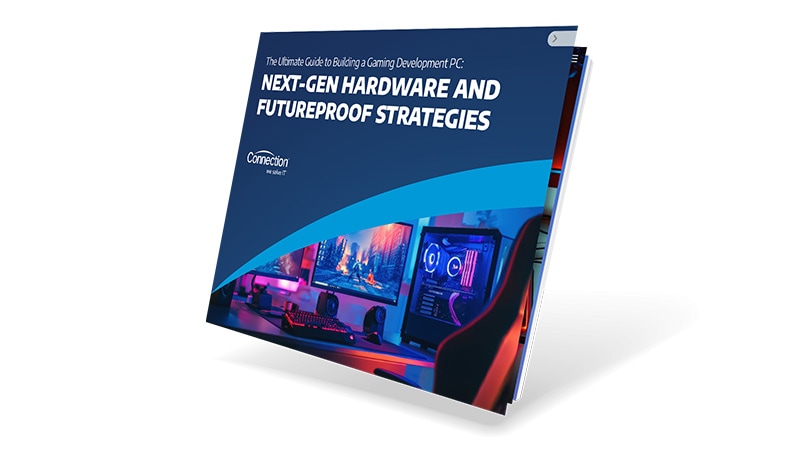

Accelerate Game Development with AMD Ryzen Threadripper CPUs
Designing and coding graphically complex games requires powerful workstation hardware, constantly pushing the limits of what is available. Designers are constantly looking for ways to improve their iteration time, while the games grow in size and scope.Learn how The Coalition deployed AMD Ryzen Threadripper 3970X CPU powered workstations to keep developers effective while working from home, compiling, and linking code quickly from a single workstation.
AMD Ryzen Threadripper PRO Processors for VFX Artists
If you need capable, dependable workstation processors to accelerate your creative process and produce world-class effects, then you need Threadripper PRO from AMD.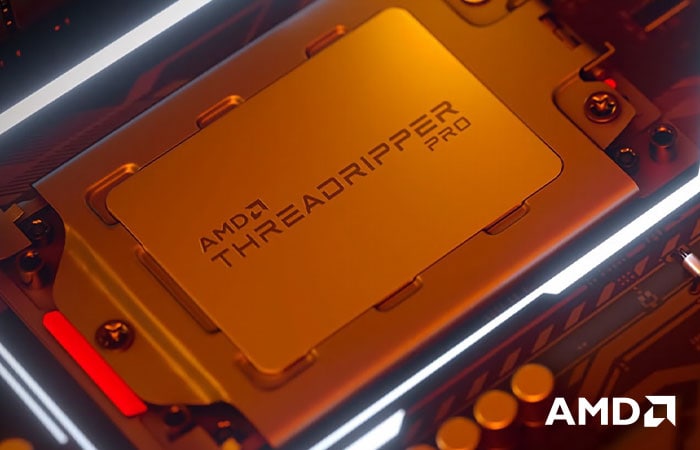
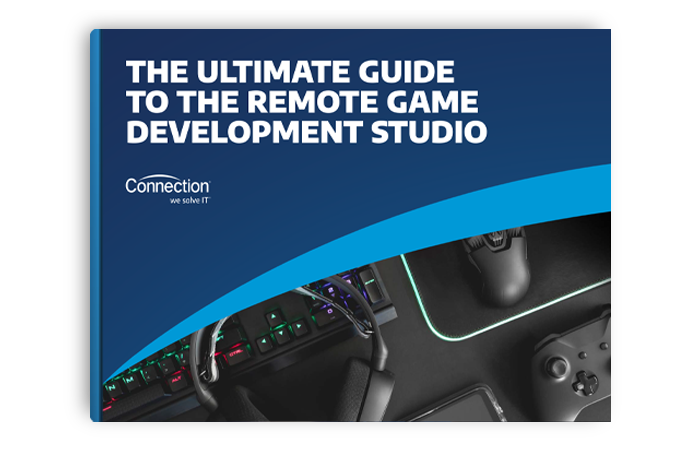
The Ultimate Guide to the Remote Game Development Studio
Today’s game designers and developers need the ability to work from anywhere. And technology has never been better equipped to deliver elements of the hardware these high-tech professionals need to do their best work, no matter where they work.Read this guide to take a closer look at the specific technologies to consider and questions to ask, to determine what tools your developers need for a creative, productive, high-performance studio anywhere.
Welcome to Exceptional Performance, Stability and Reliability
The AMD Radeon™ PRO W6000 Series GPUs feature the meticulously engineered AMD RDNA™ 2 graphics architecture, found within leading gaming consoles. Engineered from the ground up, the AMD RDNA 2 architecture introduces an array of advanced features and takes professional graphics to the new level of performance and efficiency.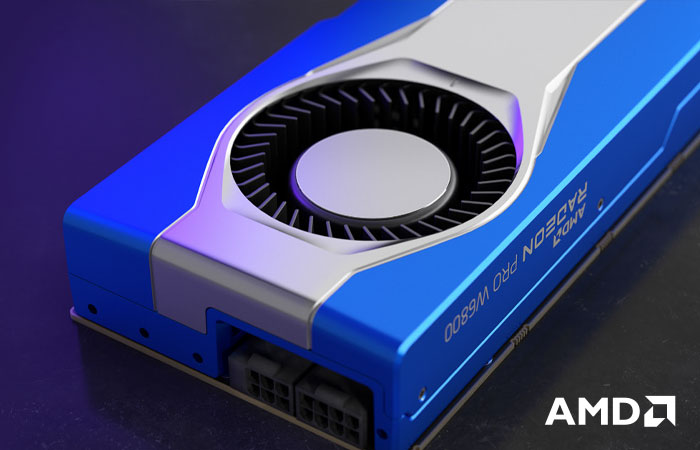
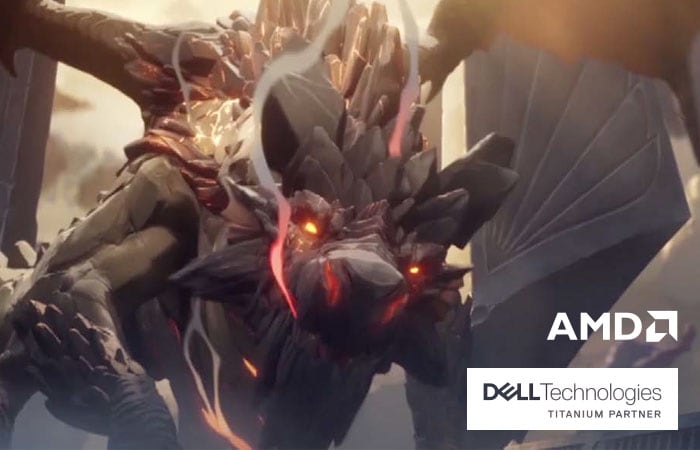
AMD and Dell Drive Capacity to Meet Performance Needs
Axis Studios has been at the forefront of animating computer-generated imagery (CGI) for the games industry since 1999. But the studio faced the challenge to provide render farm capacity to meet constantly expanding performance needs of new animation and VFX markets.Learn how the switch to AMD EPYC CPU-powered DELL EMC PowerEdge servers resulted in five times the rack density in the render farm enabling much faster performance.
Virtual Reality (VR)
Accelerated Training and Remote Expert Field Service
VR for Industrial Services

Virtual reality (VR) and augmented reality (AR) are transforming the industrial sector. While virtual reality and related technologies are often associated with consumer video games, they also have practical business applications that are being used in field services, manufacturing, and other industrial fields. From training new hires to providing remote expert support on service calls, these technologies have a wide variety of uses. Here’s a closer look at how these technologies are accelerating the pace of business innovation in industrial sectors.
VR / AR in Business Today
A quick look at the numbers shows the rapid rise of virtual reality being used in business today. Statista estimates that by 2030, as many as 23 million jobs will be regularly augmented with VR and AR, compared to just 800,000 jobs in 2019. The use of virtual reality within business is also forecasted to grow to $4.26 billion, according to recent reports by CNBC. This growth has the potential to transform many different areas of business, from how companies engage employees to how they interact with customers and prospects.Recruiting and Training Talent in Virtual Worlds
One innovative area where industrial organizations are using VR is the recruiting process. Businesses have created immersive experiences that offer an inside look at “a day in the life” of a specific role, as well as virtual office tours that are used during remote interviews. With virtual reality, it’s also possible to conduct candidate assessments. For example, Jaguar created a recruiting game that educates candidates about electric cars and has them play code-breaking games. Candidates who performed well on the games and applied for positions were fast-tracked through the hiring process.Using Virtual Reality in Onboarding and Training
Another use of virtual reality in the workplace focuses on training. Recently, an expert told the Society for Human Resource Management (SHRM) that when utilizing VR training to teach customer service reps, “this highly immersive form of training helped new hires achieve competency faster than with other modes of learning.” For field services technicians and individuals in highly technical roles, virtual reality training enables detailed walkthroughs of complex scenarios without physical access to the equipment. In addition, a trainer or expert can participate in the session to assess performance, offer guidance, and much more.Virtual reality is being used to train professionals on repairing complex manufacturing equipment, performing detailed HVAC installations, and servicing customers in industries such as utilities, where a repair may signal a dangerous environment.
Augmenting Field Service Talent with Remote Expertise
According to Field Service News, nearly three-quarters of field service companies offer some form of remote support—and some of those services are now enabled by augmented reality. With augmented reality, a technician who is on-site with a client and needs expert support can share everything they’re seeing and be guided step-by-step through even the most complex repairs. Customer issues are solved faster, while companies save money on travel and staffing costs.Smart Glasses Speed Up Scanning and Assembly
Multiple use cases show how mixed reality tools are also reshaping what happens on a connected factory floor. For example, some manufacturers are outfitting warehouse staff with glasses that can scan barcodes for faster inventory tracking and management. In other cases, augmented reality devices are being used to track complex assembly processes and ensure that no critical steps are missed. Augmented reality as a monitoring and scanning tool can increase accuracy while helping reduce errors.8 Commercial Applications for Mixed Reality in 2022 and Beyond
Virtual reality, augmented reality, and mixed reality have transformed the way the world does business. From allowing consumers to explore virtual showrooms to relying on expert augmented-reality support to guide field service technicians through complex repairs, these new tools are streamlining key business processes and delivering unforgettable customer experiences. In this guide, we’ll explore eight fast-growing ways businesses are using these technologies and offer a closer look at the lessons for technology leaders crafting their own mixed-reality strategies for 2022 and beyond.Mixed reality tools are transforming business. Read this eBook to learn about 8 common commercial applications you should know about.


Extending Reality
How AR, VR, and MR Drive Game Development
Extended reality (XR) is reshaping the way companies do business and fueling the demand for game development. Investments in game technology are on the rise as the rapid adoption of virtual reality (VR), augmented reality (AR), and mixed reality (MR) are driving more game-development efforts for both consumers and businesses. From commercial applications to expanded mainstream access to virtual reality and augmented reality tools among consumers, this fast-growing sector is creating new opportunities for service providers, in-house teams, and technology manufacturers to meet the growing demand.Read this white paper to learn what you need to know about the latest gaming development trends and how to take advantage of them.
eSports
A Rapidly Growing Industry
The global eSports market was valued at $1.1B in 2019 and is estimated to reach $3.5B by 2027*. There are a number of factors impacting its explosive growth, including advancements in gaming technology, the growing number of eSports events (and their respective prize pools), and more. The COVID-19 pandemic also had a significant impact on the growth of eSports, as the social distancing requirements, while limiting in-person events, fostered community and competition through technology.Featured eSports Events
The International Olympic Committee launched its Olympic Virtual Series in 2021. The inaugural series had strong participation (est. 250,000 participants) and is expected to continue on a yearly basis. But there are a staggering number of different events, large and small, that occur each year (with more popping up all the time). These events generally feature a single game or gaming genre. Here are a few examples of the more popular events:
Evolution Championship Series (EVO)
EVO is an annual fighting game event, which started in 1996 as Battle by the Bay. The competition includes a mix of old and new games each year. EVO was acquired in 2021 as part of a joint venture between Sony Interactive Entertainment and Endeavor (RTS).
League of Legends World Championship (Worlds)
Worlds, which started in 2011, is a team-based event focused on League of Legends, a multiplayer online battle arena (MOBA) game played on PC. With a massive international audience, the 2021 event reached a peak estimated viewership of $4M.
FIFAe World Cup
As its name suggests, FIFAe is an annual eSports competition sponsored by FIFA and EA. With its open qualifying format, millions of players compete in games of virtual football (soccer to those of us in the United States). The 2020 and 2021 competitions were canceled due to the pandemic.
*ReportLinker, 2021, Global Esports Market By Revenue Source
eSports for Professional Development and Teambuilding
eSports provides more than entertainment. It can be used as a morale booster, productivity enhancer, and even a skill generator. Discover why businesses all over the world are taking an example from gamers and bringing a new level of fun to their teams that benefits everyone.



